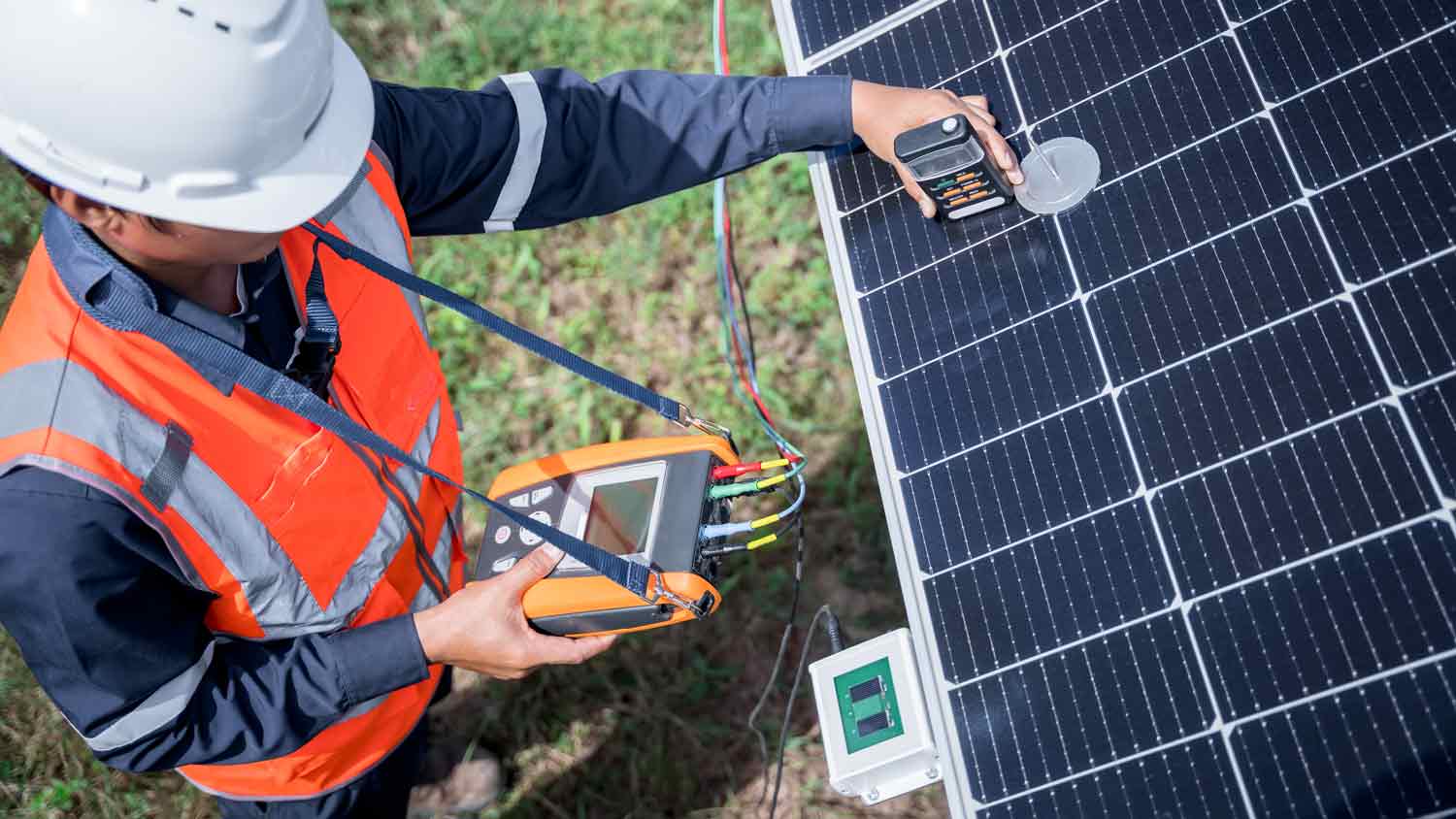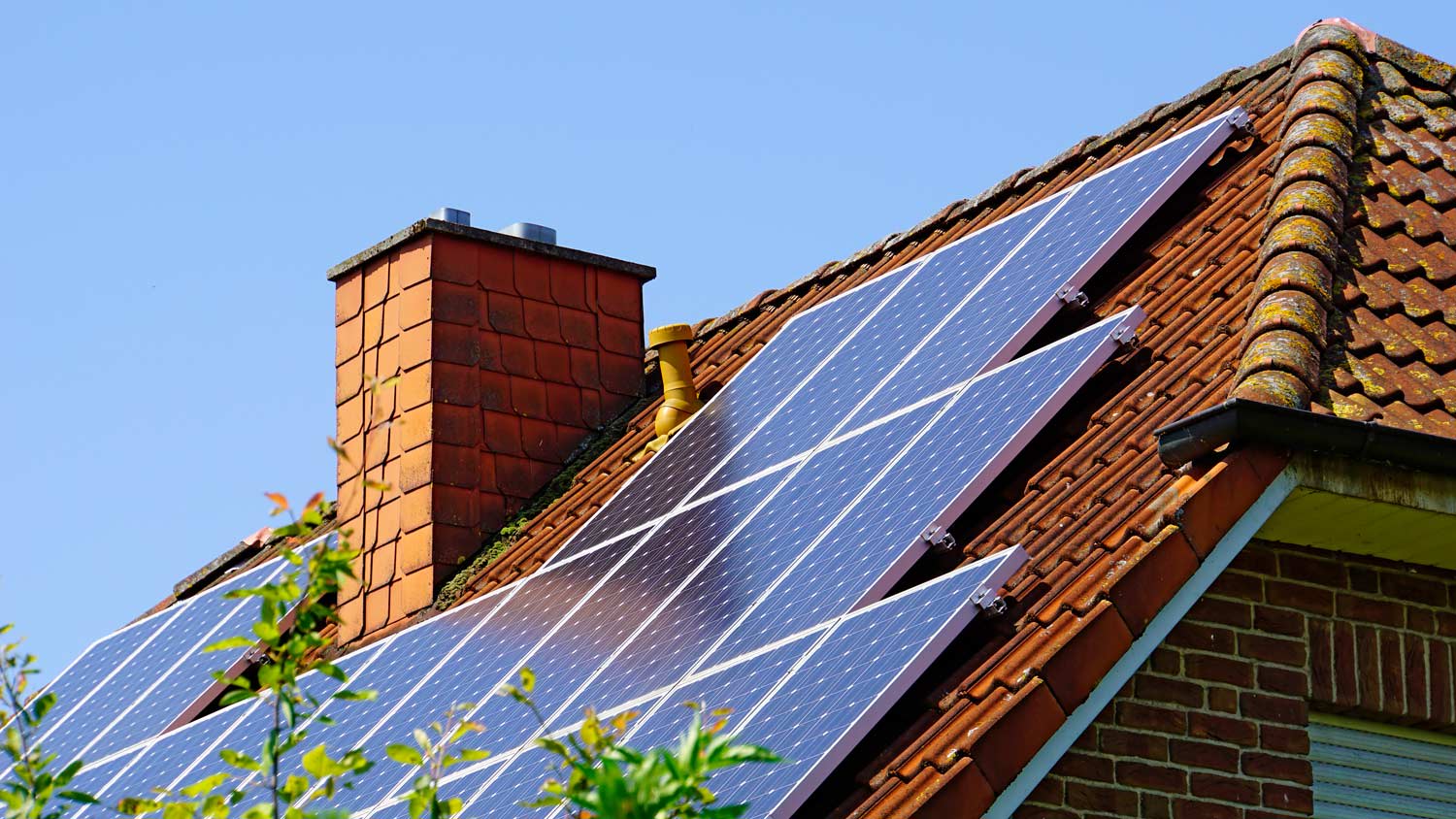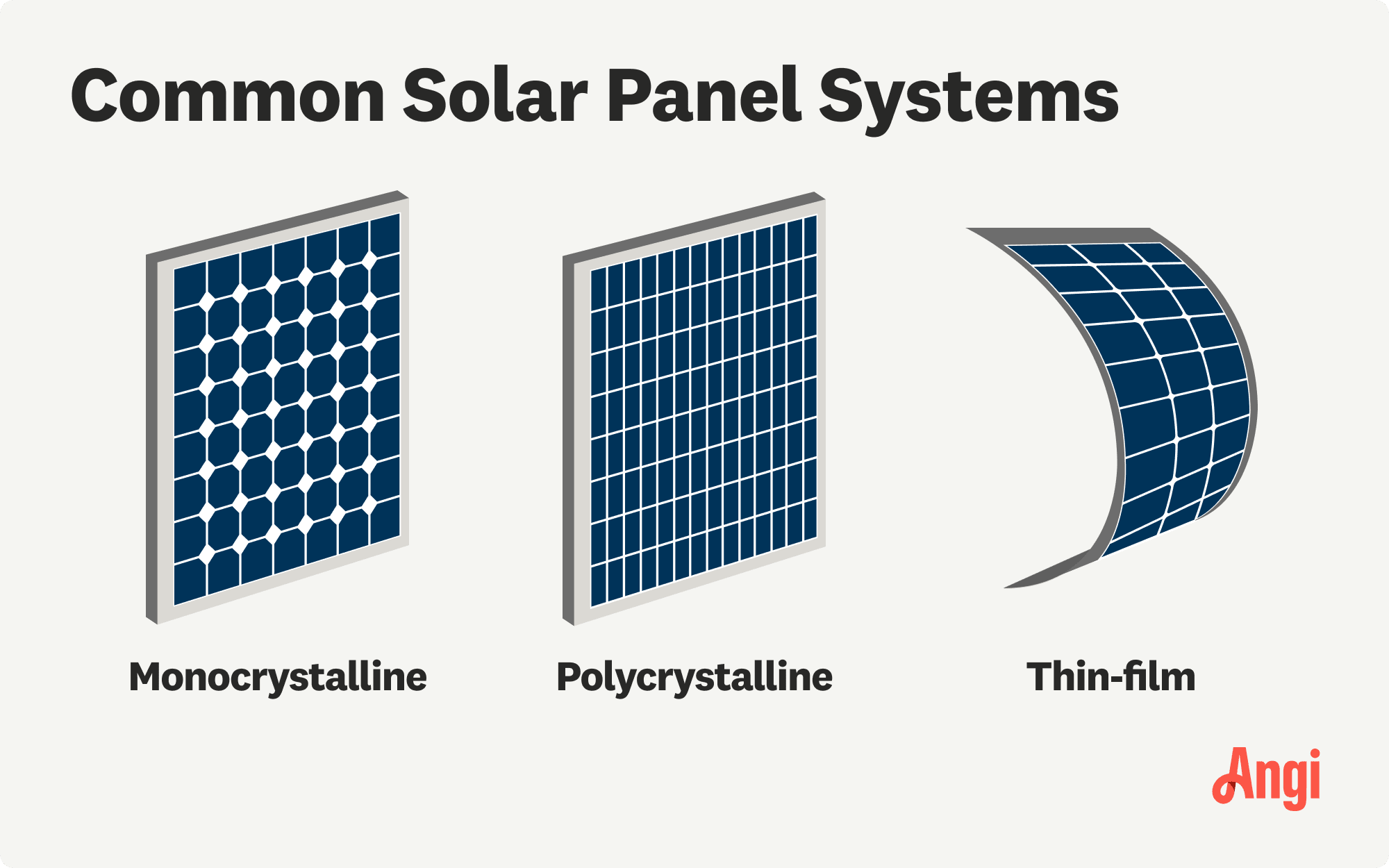
Discover the average solar panel inspection cost, what impacts pricing, and how to save. Get expert tips to keep your solar system efficient and safe.
Installing solar panels in Dallas, Texas, averages $28,508, though it ranges between $20,274 and $37,692 based on system size, panel type, wattage, and more. A solar panel installer can assess your roof and install your system.


Most homes in Dallas need an 8 to 12 kW solar energy system.
Monocrystalline panels are the go-to for their efficiency in warm, sunny climates.
Because Dallas's electricity market is deregulated, you’ll need to shop around for a provider with a solar buyback plan.
Dallas, Texas, gets a yearly average of eight hours of sunlight per day. As a sunnier city, you can save a ton of money on electricity by installing solar panels—and they’re greener, too. Solar panel installation in Dallas costs $28,508 on average, but it can range from $20,274 to $37,692. The biggest factors impacting the price are the amount of electricity you use and the type of solar panels you choose.
You’ll also have to consider the size, number of panels, and hardware of your new solar panel system. Here are the major factors.
The size of the solar system will impact your solar panel installation costs. The larger the output, the more you’ll pay.
Most homes in Dallas need 8- to 12-kW (kilowatt) systems, depending on the wattage, but a solar panel installer can help you choose the best size for your home. The table below shows average costs based on the size of your solar system:
| System Size (kW) | Average Cost |
|---|---|
| 6 | $14,500 |
| 8 | $19,100 |
| 10 | $23,300 |
| 12 | $27,450 |
| 14 | $31,350 |
| 16 | $35,100 |

When choosing the type of solar panel that works best for your home, consider three main factors: efficiency, life expectancy, and design. Here’s how the type of solar panel can affect your cost:
| Type of Solar Panel | Average Cost per Watt | Pros | Cons |
|---|---|---|---|
| Monocrystalline | $1–$1.50 | High efficiency, longest lifespan | Highest cost, performs poorly in shade |
| Polycrystalline | $0.90–$1 | Better affordability, performs better in shady areas | Lower efficiency, less efficient in warm climates |
| Thin film | $0.70–$1 | Best for homes with high heat and low light, lowest efficiency | Higher cost, needs more space |
On average, most homes need anywhere from 20 to 25 solar panels to fully power a home, but this can range from as few as 15 to as many as 34. How many solar panels you’ll need depends on the number of watts per panel, your energy consumption, and the efficiency of your panels. Your average solar panel will have an output of anywhere from 250 to 400 watts. The dimensions of your solar panels will also depend on the power output.
Hardware accounts for about 10% of solar panel installation costs. The more advanced the technology, the higher the up-front cost. The type of mount will affect the cost as well:
Fixed mounts: $10–$65 per mount
Adjustable mounts: $20–$200 per mount
Tracking: $500–$3,000 or more per mount (these mounts can self-track sunlight, leading to up to 45% more energy production)
Other materials you will need for a solar energy system include the parts in the table below.
| Hardware | Average Cost |
|---|---|
| String inverter | $1,000–$3,400 each |
| Microinverter | $150–$300 each |
| Power optimizer | $50–$150 each |
| Solar battery | $1,000 per kWh |
String inverter: Converts direct current (DC) electricity to alternating current (AC) electricity
Microinverter: This works like a string inverter but attaches to each individual panel so each can work independently, helping mitigate losses from shading due to trees
Optimizer: Regulates currents so each panel is more energy efficient and prevents power loss
Battery: Stores excess energy from the system so homeowners can use it at night or during a power outage
Some systems use a single solar inverter or several microinverters that convert DC to AC electricity. Materials like the wiring and battery are often grouped with the package price unless you opt for add-on services.
Hiring an experienced pro to install your solar panels is key to making the most of this exciting new home addition. On average, you should budget $5,000 to $9,500 for labor costs when you hire a solar panel installer in Dallas, Texas. This range doesn’t include permits or the cost of additional technology, such as special mounts, tiles, or shingles.
Solar panel installation does require electrical work, which must be done by a registered electrician. Though many solar panel installation companies have a licensed electrician on staff who specializes in solar panels, roofing contractors sometimes subcontract an electrician. The average cost of hiring an electrician in Dallas is $60 to $90 per hour.
Permits and inspections add an average of $450 to the solar panel costs. All solar panel installations in Dallas require a building permit, which can only be obtained by a licensed building contractor. You’ll have to show structural plans approved by a structural engineer and a roof plan of the proposed design, and get a solar panel inspection.
While the return on investment of solar panels is around 35%, you may only see a modest increase in home value in Dallas. This is because energy prices are already low compared to other parts of the country (about half as much as states like New York and California). That said, solar panels are still appealing to eco-conscious homebuyers and those who prefer being off the grid.
The real draw of solar panels is the long-term energy savings. If you plan to stay in your home, solar panels can help you save an average of $34,500 in energy costs over 25 years. In other words, they will eventually pay for themselves.
Once your solar panels are paid off, they're officially your property. If you move, you can reinstall them on a new rooftop. Alternatively, they can increase the value of your home by 3% to 4% and attract more buyers. They can also give your property a competitive edge in a buyers’ market.
The best way to save money on the up-front costs of installing solar panels is to take advantage of the Solar Investment Tax Credit (ITC) before it ends on December 31, 2025. The ITC allows homeowners to claim a federal tax credit equal to 30% of the price of their solar panel system installation.
For example, if your solar panel system costs $30,000 before the federal tax credit, you can save around $9,000. However, to benefit from this credit, your solar system has to be installed and working before the federal incentive ends.
The ITC, also known as the Residential Clean Energy Credit, was originally extended through 2032 as part of the Inflation Reduction Act. However, new federal legislation (the Big Beautiful Bill Act) signed into law on July 4, 2025, terminated the credit early. The Solar Energy Industries Association® (SEIA) outlines the high-level policy changes and restrictions on energy tax credits.
Additionally, the extra power you choose not to store in a battery can be sent back to the grid. Your local utility company will compensate you for that power, but the amount will vary. You can check the Utility Rate Database on Open EI to estimate how much you can expect to receive for generating excess energy.
Dallas doesn’t have a traditional net metering program because the electricity market is deregulated, meaning the supply of electricity is separate from the delivery of electricity. Instead, certain Retail Electric Providers (REPs) offer solar buyback plans, where you can sell them your excess electricity. Uncapped plans are preferred because there’s no limit on the amount of credit you can receive, but it depends on the rate.
Dallas also has local solar incentives that can help offset the cost of a new system. These include the Renewable Energy Systems Property Tax Exemption, which helps save on local property taxes (Texas has no state property taxes), and the CoServ solar energy rebate program.
Home is the most important place on earth, which is why Angi has helped more than 150 million homeowners transform their houses into homes they adore. To help homeowners with their next project, Angi provides readers with the most accurate cost data and upholds strict editorial standards. We survey real Angi customers about their project costs to develop the pricing data you see, so you can make the best decisions for you and your home. We pair this data with research from reputable sources, including the U.S. Bureau of Labor Statistics, academic journals, market studies, and interviews with industry experts—all to ensure our prices reflect real-world projects.
Want to help us improve our cost data? Send us a recent project quote to [email protected]. Quotes and personal information will not be shared publicly.
From average costs to expert advice, get all the answers you need to get your job done.

Discover the average solar panel inspection cost, what impacts pricing, and how to save. Get expert tips to keep your solar system efficient and safe.

Get a clear estimate for solar water heater repair cost. Learn what impacts pricing and how to budget for your solar water heater repair.

There are a few factors to consider when it comes to solar panel repair costs. This guide breaks down the prices of solar panel removal, repair, and replacement.

Let’s dig into the debate between solar batteries versus generators to help you choose the best backup power solution.

What direction should solar panels face? South-facing panels work the best in the U.S., but that’s not the only option. This guide will help you decide.

Looking to install solar panels? While they pair well with most roofing, choosing the best roof for solar panels can ramp up energy efficiency.